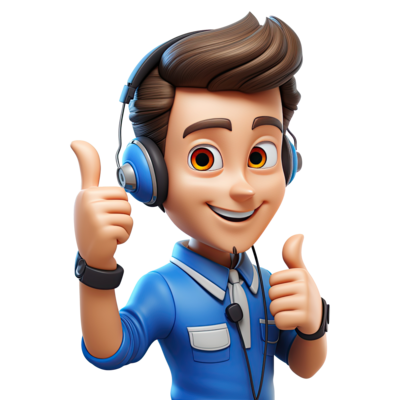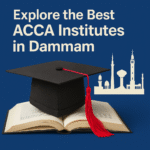Overview
Learning needs utmost focus, determination, and constant effort. Students with learning disabilities find it difficult to learn and retain information. But still, these students can outshine if they are willing to learn something new and with the right guidance from the right mentor. This guide will help you understand learning disabilities, the reasons behind them, and how empowering educators support students with learning disabilities.
Understanding Learning Disabilities
Learning disabilities are neurological disorders affecting a person’s capability of learning. They find it difficult to understand, process, and retain new information. These challenges manifest in various ways, making traditional education methods less effective for students.
Educators must detect these challenges and adapt their teaching strategies to create an inclusive learning environment. Here are some common difficulties experienced by students with some disabilities.
Difficulty in Understanding New Concepts
Students with LDs often struggle in creating familiarity with new concepts, especially when taught in old, conventional ways. Most of the time, they need alternative teaching approaches such as visuals, interactive sessions, and step-by-step explanations to overcome the learning gap.
Decreased Focus
With LDs, it is difficult to maintain focus often, for students. They may find it challenging to follow along with lectures, keep attention on a single task, or process multiple pieces of information at once. Structured routines and interactive learning can help improve concentration.
Limited Memory Retention
Because of weak working memory, many students find it difficult to retain information. This can affect their ability to recall previously learned material. Educators can aid them by using memorization techniques, repetition, and practical applications to reinforce learning.
Who Suffers from Learning Disabilities?
Below are a few reasons that serve as the causes of learning disabilities.
Students with Genetic Disorders
Genetic causes that are caused by mutation in genes become the reason for learning disabilities. For example, dyslexia, ADHD, and autism spectrum disorders can contribute to learning disabilities. Why? These conditions affect cognitive functions, making it difficult for students to learn in traditional educational setups.
Children with Less Brain Development
Delayed brain development due to premature birth, neurological disorders, or lack of early educational stimuli is common. This can cause some disabilities for those children who experience them. Early intervention and specialized teaching strategies can help them deal with these challenges.
Individuals with Psychological Issues
Mental health issues are termed as psychological issues. It includes anxiety, depression, and trauma responses that impact learning. Emotional instability can cause difficulties in learning, concentration, and memory retention. This will overall affect the academic performance of the students causing learning disabilities.
Can Students with Learning Disabilities Still Outshine?
Yes definitely! With the right guidance, support, and teaching, students with learning disabilities can achieve academic and professional success. Here is how educators can help them become successful.
Personal Counseling
Giving one-to-one guidance helps students understand their learning patterns, which will build confidence in them. Promoting self-awareness and resilience can empower them to take control of their learning style.
Using Visual Aids for Learning
Visual learning tools such as diagrams, infographics, and videos improve comprehension and retention for students with LDs. Educators should incorporate different tools into lessons to simplify complex concepts.
Teaching Memorization Techniques
Students with LDs benefit from structured memorization techniques such as mnemonic devices, chunking, and storytelling. Repetitive learning and real-life applications also reinforce knowledge retention.
Building Focus Through Repetition
Repetition help in strength learning and build focus. Educators can use interactive methods, such as visual learning and group discussions. This will keep students engaged and attentive.

today!
How Educators Help Students with Learning Disabilities
Here are tips that educators can adapt to help students with learning disabilities.
Creating an Inclusive Learning Environment
Empowering educators can create an inclusive learning environment to support student learning. An attractive and pleasant learning environment encourages students and makes them curious about learning something new.
Role of Special Educational Needs Coordinators (SENCOs)
For the identification of students with learning disabilities, SENCOs play a very important role. SENCOs develop individual education by working closely with parents and teachers. Individual education plans ensure that students receive the necessary support.
Apprenticeship Support for Learners with Disabilities
These programs focus on real-world experience, helping students develop practical skills in a supportive and encouraging environment. For instance, training that focuses on hands-on learning can benefit students with LDs.
Reasonable Adjustments and Exam Access Arrangements
Assessments and exams should be adapted to help students with LDs. Some reasonable adjustments such as extra time, easily operative technology, and modified question formats can help in leveling students’ skills.
Training Staff for Inclusive Education
Professional development programs help teachers with the skills needed to create a learning classroom environment. Educators must have training to understand different learning disabilities and how they can change their teaching methods accordingly.
ACCA Support for Disabled Students
Organizations like the Association of Chartered Certified Accountants (ACCA) provide students with enough support with disabilities. They will make sure that they receive appropriate accommodations during their studies and examinations. As ACCA is a globally recognized qualification and provide lots of facilities for students.
Conclusion
With a supportive and adaptive learning environment, students can deal and make themselves successful. Therefore, empowering educators is important to help students with learning disabilities, and it needs a multipurpose approach, including personalized guidance, engaging teaching methods, and institutional support. With the right strategies, educators can play a very transformative role in shaping the future of students who face disabilities while learning.
Frequently Asked Questions
Can students with learning disabilities do ACCA?
Yes, with the good educators on their side, students can do ACCA still with learning disabilities.
How can educators identify students with learning disabilities?
Teachers can look for signs such as difficulty following instructions, trouble with reading and writing, lack of focus, and poor memory retention. A Special Educational Needs Coordinator (SENCO) can assist in assessing and diagnosing LDs.
What are some reasonable adjustments for students with learning disabilities?
Reasonable adjustments include extra exam time, operative technology use, modified teaching methods, and personalized learning plans to help students succeed.
Can students with learning disabilities pursue professional courses like ACCA?
Yes, many students with LDs complete professional courses like ACCA. They can excel in their studies with the right learning support, exam access arrangements, and reasonable adjustments.
How can schools create an inclusive learning environment?
Schools can implement different learning strategies such as visuals, graphics and make learning easy. Additionally, they can give additional support, train staff, and make exam accommodations easy for students with disabilities.
What role does apprenticeship support play for students with learning disabilities?
Apprenticeship gives hands -on learning experiences that help students develop necessary skills in real world. This will make education accessible and practical for those with learning disabilities.




